Online Gather.town Pitches
Clinical Perfusion Imaging
Joint Annual Meeting ISMRM-ESMRMB & ISMRT 31st Annual Meeting • 07-12 May 2022 • London, UK

| Booth # | ||||
|---|---|---|---|---|
3746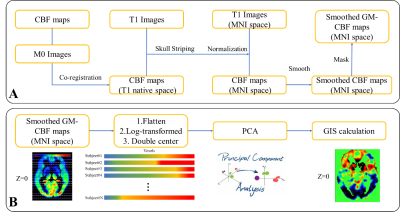 |
1 | How does Levodopa treatment in Parkinson’s disease impact perfusion: A MR pCASL Study Video Not Available
Hanyu Wei1,2, Le He1, Rui Li1, and Yu Ma3
1Tsinghua University, Beijing, China, 2Tsinghua University, Bejing, China, 3Department of Neurosurgery, Tsinghua University Yuquan Hospital, Beijing, China
Levodopa therapy of Parkinson’s disease(PD) was considered to have effects on dopamine and norepinephrine levels therefore tending to alter the cardiovascular circulation. To find how cerebral perfusion changes in the levodopa process among PD patients, both perfusion capacity and spatial patterns computations were performed in this study. The initial conclusion is no obvious evidence supporting that cerebral perfusion alternation was effected in levodopa process. Further investigations were required to validate this point of view.
|
||
3747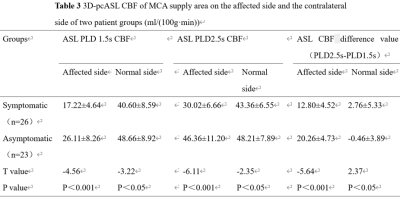 |
2 | Can combined 3D pcASL and t-ASL imaging effectively assess collateral compensation for patient with unilateral MCA severe stenosis or occlusion? Video Permission Withheld
juan li1, guangrui shao1, and weiqiang dou2
1The Second Hospital of Shandong University, jinan, China, 2MR Research, GE Healthcare, beijing, China
This study aimed to compare the difference of blood perfusion and collateral circulation compensation between symptomatic and asymptomatic patients with severe stenosis or occlusion of unilateral middle cerebral artery (MCA) by using 3D pseudo-continuous arterial spin labeling (pcASL) at two different post labeling delays (PLD) times of 1.5s and 2.5s and territorial pcASL with bilateral internal carotid arteries, ipsilateral external carotid artery and vertebrobasilar artery labelled. 49 patients (26 symptomatic and 23 asymptomatic) were recruited. Compared with symptomatic group, asymptomatic group showed significantly stronger collateral circulation and higher number of patients with secondary collateral circulation opening.
|
||
3748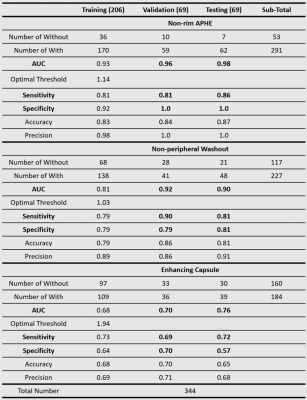 |
3 | Explainable and Quantitative LI-RADS Automated Grading System for Hepatocellular Carcinoma based on Dynamic Contrast-Enhanced MRI
Xueqin Xia1, Li Yang2,3, Ruofan Sheng2,3, Rencheng Zheng4, Weibo Chen5, Chengyan Wang1, Mengsu Zeng2,3,6, and He Wang1,4
1Human Phenome Institute, Fudan University, Shanghai, China, 2Department of Radiology, Zhongshan Hospital, Fudan University, Shanghai, China, 3Shanghai Institute of Medical Imaging, Shanghai, China, 4Institute of Science and Technology for Brain-Inspired Intelligence, Fudan University, Shanghai, China, 5Philips Healthcare, Shanghai, China, 6Cancer Center, Zhongshan Hospital, Fudan University, Shanghai, China
The judgment of the three major features of LI-RADS by radiologists is subjective and time-consuming. We proposed an explainable and quantitative algorithm based on DCE MRI to recognize the three major features and then get LI-RADS grades together with tumor diameter. The AUC is 0.96, 0.92, 0.70 in the validation set and 0.98, 0.90, 0.76 in the testing set for arterial phase hyper-enhancement (APHE), washout, and capsule. The overall accuracy of LI-RADS grades is 0.68 and 0.71 for the validation and testing set. The developed automatic LI-RADS grading system can provide explainable results for HCC diagnosis with high efficiency.
|
||
3749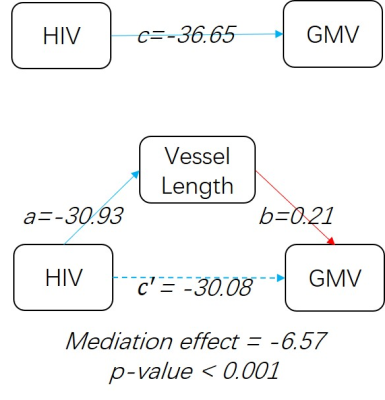 |
4 | Cerebrovascular dysfunction leads to related Gray Matter loss in HIV infection
Bei Wang1, He Wang1,2, Ying-Hua Chu3, Yuxin Shi4, Dan-Chao Cai4, and Yi Zhan4
1Institute of Science and Technology for Brain-Inspired Intelligence, Fudan University, Shanghai, China, 2Human Phenome Institute, Fudan University, Shanghai, China, 3MR Collaboration, Siemens Healthineers Ltd., Shanghai, China, 4Radiology department,Shanghai Public Health Clinical Center, Fudan University, Shanghai, China
We examined the effects of HIV on the structure of cerebrovasculature and the interactions among HIV infection, brain tissue volume and cerebrovascular structure. Decreased cerebral vessel volume, vessel length and branch number were found in people with HIV. HIV related gray matter loss was found caused by the decreasing vessel length. Additionally, decreasing vessel distribution in left insula was found in vessel probability atlas in people with HIV, which may relate to various clinical symptoms.
|
||
3750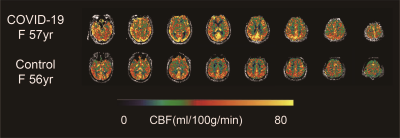 |
5 | Increased Cerebral Blood Flow in Recovered COVID-19 Patients Assessed by Arterial Spin Labeling MRI
Yan Bai1, Yaping Wu1, Wei Wei1, Xianchang Zhang2, and Meiyun Wang1
1Department of Medical Imaging, Henan Provincial People's Hospital, Zhengzhou, China, 2MR Collaboration, Siemens Healthineers Ltd., Beijing, China
Increased global and regional cerebral blood flow were observed in recovered corona virus disease 2019 patients, which may reflect the brain’s compensatory responses following corona virus disease 2019.
|
||
3751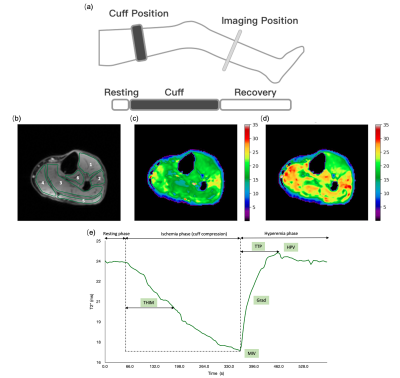 |
6 | Blood Oxygen Level-Dependent Imaging of Lower Limbs: Perfusion and Clinical Assessment of Peripheral Artery Disease
Xiaoxi Yu1, Zhaoxi Liu2, Jianxun Qu3, Fengdan Wang2, Zhichao Lai1, Jiangyu Ma1, Xiaoyuan Fan2, Luming Ye4, Jiang Shao1, Yan Zhang2, Feng Feng2, Bao Liu1, and Zhengyu Jin2
1Vascular Surgery, Peking Union Medical College Hospital, Beijing, China, 2Radiology, Peking Union Medical College Hospital, Beijing, China, 3Siemens Healthineers Ltd., Beijing, China, 4Advanced Therapies Collaboration, Siemens Healthineers Ltd., Beijing, China
This study used blood oxygen level-dependent (BOLD) MRI to assess the hemodynamics of the lower limbs for patients with peripheral artery disease. We obtained dynamic change of BOLD T2* with high temporal and spatial resolution in reactive hyperemia experiment and found good correlation between BOLD parameters and clinical walking performance, which verified the significance of perfusion measurement for clinical assessment.
|
||
3752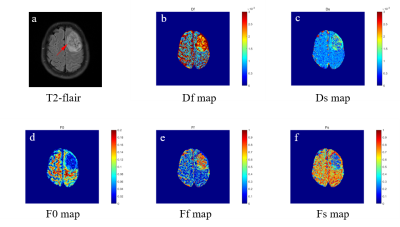 |
7 | Application of a modified tri-exponential DWI in detecting the change of glymphatic system: a preliminary exploration in gliomas
Mengqiu Cao1, xiaoqing wang2, ke xue3, Yongming Dai3, and Yan Zhou2
1Department of Radiology, Department of Radiology, Renji Hospital, School of Medicine, Shanghai Jiao Tong University, Shangha, shanghai, China, 2Department of Radiology, Renji Hospital, School of Medicine, Shanghai Jiao Tong University, Shangha, shanghai, China, 3MR Collaboration, Central Research Institute, United Imaging Healthcare, Shanghai, China, shanghai, China
Spectral analysis using non-negative least squares in a modified tri-exponential muti-b-value diffusion-weighted imaging(DWI) enables estimation of an intermediate component in the diffusion spectrum between parenchymal diffusion and microvascular pseudo-diffusion. Several studies have suggested the intermediate component to be with the glymphatic alterations in different disease state. The aim of this this study aims to investigate whether the modified tri-exponential model are effective in evaluating the grading and IDH-1 gene type of gliomas.
|
||
3753 |
8 | Alterations of the Intranetwork and Internetwork Connectivity of Default Mode Network and Olfactory Network in Patients with COVID-19
Hui Zhang1,2, Tom Wai-Hin Chung3, Fergus Kai-Chuen Wong4, Siddharth Sridhar3,5,6, Ivan Fan-Ngai Hung6,7, and Henry Ka-Fung Mak1,2,8
1Department of Diagnostic Radiology, The University of Hong Kong, Hong Kong, Hong Kong, 2Alzheimer's Disease Research Network, The University of Hong Kong, Hong Kong, Hong Kong, 3Department of Microbiology, The University of Hong Kong, Hong Kong, Hong Kong, 4Department of Ear, Nose and Throat Surgery, Pamela Youde Nethersole Eastern Hospital, Hong Kong, Hong Kong, 5State Key Laboratory of Emerging Infectious Diseases, The University of Hong Kong, Hong Kong, Hong Kong, 6Carol Yu Centre for Infection, The University of Hong Kong, Hong Kong, Hong Kong, 7The Collaborative Innovation Center for Diagnosis and Treatment of Infectious Diseases, The University of Hong Kong, Hong Kong, Hong Kong, 8State Key Laboratory of Brain and Cognitive Sciences, The University of Hong Kong, Hong Kong, Hong Kong
To identify the functional abnormalities of olfactory network (ON) and default mode network (DMN) in COVID-19 patients, resting state fMRI (rs-fMRI) was applied in this study. Seed-based and ROI × ROI analysis were used to calculate the inter- and intra-network connectivity of DMN and ON. In the results, COVID-19 patients showed higher intranetwork connectivity in DMN and internetwork connectivity between ON and DMN. We postulated that these greater activities compensate for the deficits of olfactory processing and general well-being. In addition, our study suggests rs-fMRI to be a useful biomarker for the evaluation of COVID patients.
|
||
3754 |
9 | Brain Functional Connectome prospectively encodes Distress Symptoms During COVID-19 pandemic
Nanfang Pan1, Song Wang1, Kun Qin1, Yajing Long1, and Qiyong Gong1
1Huaxi MR Research Center, Chengdu, China
In the prospective investigation of public mental health following COVID-19 pandemic, we assessed the psychological status of a general sample. Furthermore, we built a brain-distress construct which mainly contained within- and between-DMN connection patterns, and the left hippocampus emerged as the hub region in distress-related connectome. Based on customized brain connectomes, we may identify individuals who confer high vulnerability to pandemic-induced distress symptoms with well-performing predictive modeling. Our findings may facilitate the understanding of neural correlates underlying distress on the individual macro-scale network level, and the susceptibility markers may serve as targets for prevention and intervention.
|
||
3755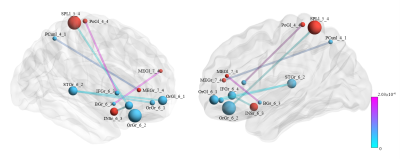 |
10 | Functional Human Brain Connectivity During Labor and its Alteration under Transcutaneous Electrical Nerve Stimulation
Chih-Chien Tsai1,2, An-Shine Chao3, Ngoc-Thanh Hoang4, and Jiun-Jie Wang1,2,5,6
1Department of Medical imaging and Radiological Science, Chang-Gung University, Taoyuan City, Taiwan, 2Healthy Aging Research Center, Chang Gung University, Taoyuan City, Taiwan, 3Department of Obstetrics and Gynecology, Chang Gung Memorial Hospital, Taoyuan City, Taiwan, 4Department of Radiology, Hue University of Medicine and Pharmacy, Hue University, Hue, Vietnam, 5Department of Diagnostic Radiology, Chang Gung Memorial Hospital, Taoyuan City, Taiwan, 6Medical Imaging Research Center, Institute for Radiological Research, Chang Gung University/Chang Gung Memorial Hospital, Taoyuan City, Taiwan
Pain management during labor is an essential part of general obstetric care. Use nonpharmacological methods such as transcutaneous electrical nerve stimulation (TENS) for pain relief is necessary because the risk from anesthetics and analgesics to the mother and fetus should always be considered. Therefore, we investigate the neural network alteration of the brain in pain relief by TENS during labor. Our findings indicated the TENS during labor might change functional connectivity of the pain-related network to reach the effect of pain relief, which improve our understanding of the neural representations of nociceptive and visceral pain-related networks.
|
||
3756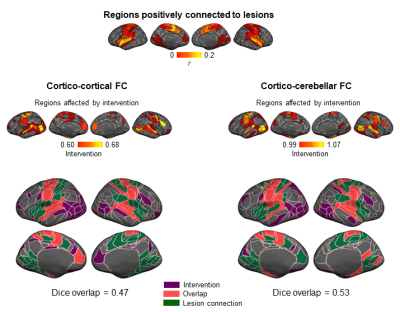 |
11 | Focused ultrasound thalamotomy for the treatment of tremor impacts the cerebello-thalamo-cortical tremor network Video Permission Withheld
Louisa Dahmani1,2, Yan Bai1, Meiling Li2, Lunhao Shen2, Jianxun Ren2, Jianjun Ma1, Danhong Wang2, Lei Du2, Weigang Cui3, Meiyun Wang1, and Hesheng Liu2,3
1Henan Provincial People’s Hospital & People Hospital of Zhengzhou University, Zhengzhou, China, 2Athinoula A. Martinos Center for Biomedical Imaging, Boston, MA, United States, 3Medical University of South Carolina, Charleston, SC, United States We used Magnetic Resonance-guided Focused Ultrasound to reduce hand tremor in 13 patients with Parkinson’s disease and essential tremor, by lesioning the ventral intermediate nucleus (VIM) of the thalamus. We also investigated the functional reorganization of the brain after the procedure. We observed a 67% reduction in target hand tremor following the procedure. The regions that showed above-average change in functional connectivity are part of the cerebello-thalamo-cortical tremor network, confirming that lesioning the VIM was successful in targeting this network. We also observed some normalization in the functional connectivity of the target hand motor region, congruent with tremor alleviation. |
||
3757 |
12 | Implementation of a Multiparametric MRI Model of Glioma Infiltration for Dose Painting Radiotherapy
Caterina Brighi1,2, David E. J. Waddington1,2, Farhannah Aly2,3,4, Eng-Siew Koh2,3,4, Amy Walker2,3,4, Philip C. de Witt Hamer5,6, Niels Verburg5,6, Lois C. Holloway2,3,4, Brendan Whelan1,2, Cathy Chen3, and Paul J. Keall1,2
1ACRF Image X Institute, Sydney School of Health Science, The University of Sydney, Eveleigh, Australia, 2Medical Physics, Ingham Institute of Applied Medical Research, Liverpool, Australia, 3Liverpool and Macarthur Cancer Therapy Centres, Liverpool, Australia, 4South West Sydney Clinical School, University of New South Wales, Sydney, Australia, 5Brain Tumor Center Amsterdam, Amsterdam University Medical Centre, Amsterdam, Netherlands, 6Department of Neurosurgery, Amsterdam University Medical Centre, Amsterdam, Netherlands
Multiparametric MRI (mpMRI) promises to guide dose painting (DP) radiotherapy to improve local control rates in glioblastoma (GBM) patients. In this study we develop a workflow for DP based on a clinically validated mpMRI model of infiltrative tumour in GBM patients. We demonstrate the repeatability of DP prescriptions, the quality of the resulting DP plans, and that DP can improve modelled local control rates over standard radiotherapy in GBM patients. Our findings provide evidence of technical and clinical validation steps, which are key for the clinical translation of mpMRI-based DP in GBM.
|
||
3758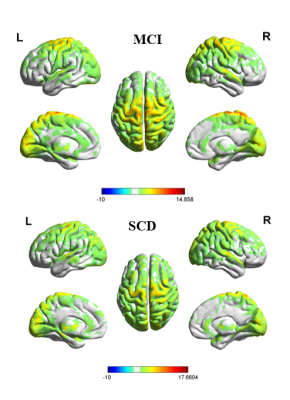 |
13 | Changes of structural network in patients with early Lacunar Infarction
XUCHEN YU1, Hongwei Li1, Min He2, Weibo Chen3, Jing Ding2, and He Wang 1
1Institute of Science and Technology for Brain-Inspired Intelligence, Fudan University, Shanghai, China, 2Department of Neurology, The Affilated Zhongshan Hospital of Fudan University, Shanghai, China, 3Philips Healthcare, Shanghai, China
Most of the lacunar infarcts are small and asymptomatic, while it could not illustrate brain function is normal. Due to the potential impact of early disseminated lacunar infarcts on brain network and function remains unclear, the objective of this study was to assess whether there were changes in brain network and functional connectivity.
|
||
3759 |
14 | Automatic Targeting of the Dorsolateral Subthalamic Nucleus for Functional Connectivity Guided rTMS Therapy
Na Zhao1,2,3,4,5, Yang Qiao 1,2,3,4,6, Juan Yue1,2,3, Ying Jing1,2,3, Meng Zhang1,2,3, Jianguo Zhang7, Zhen Yuan4,6, Yong Zhang8, Yu-Tao Xiang4,5, Jue Wang9, and Yu-Feng Zang1,2,3
1Center for Cognition and Brain Disorders, The Affiliated Hospital of Hangzhou Normal University, Hangzhou, China, Hangzhou, China, 2Institute of Psychological Sciences, Hangzhou Normal University, Hangzhou, China, Hangzhou, China, 3Zhejiang Key Laboratory for Research in Assessment of Cognitive Impairments, Hangzhou, China, Hangzhou, China, 4Centre for Cognitive and Brain Sciences, University of Macau, Macao SAR, China, Taipa, Macau, 5Unit of Psychiatry, Department of Public Health and Medicinal Administration, & Institute of Translational Medicine, Faculty of Health Sciences, University of Macau, Macao SAR, China, Taipa, Macau, 6Faculty of Health Sciences, University of Macau, Macao SAR, China, Taipa, Macau, 7Department of Neurosurgery, Beijing Tiantan Hospital, Capital Medical, Beijing, China, 8MR Research, GE Healthcare, Shanghai, China, Shanghai, China, 9Institute of sports medicine and health, Chengdu Sport University, Chengdu, China, Chengdu, China
The current study developed an AutoSTN method to help automatically localize the dorsolateral STN (DL-STN) according to steps in deep brain stimulation (DBS). Furthermore, for the consideration of the RS-fMRI FC-guided rTMS clinical study and application, we developed one-stop plug-in named ‘CC-CAT’ which could serve any RS-fMRI FC-guided rTMS treatment.
|
||
The International Society for Magnetic Resonance in Medicine is accredited by the Accreditation Council for Continuing Medical Education to provide continuing medical education for physicians.